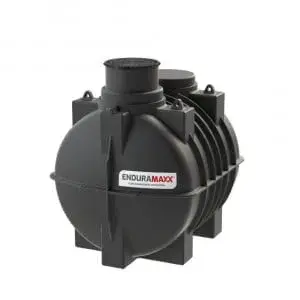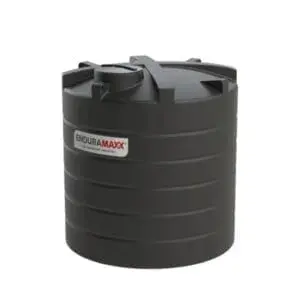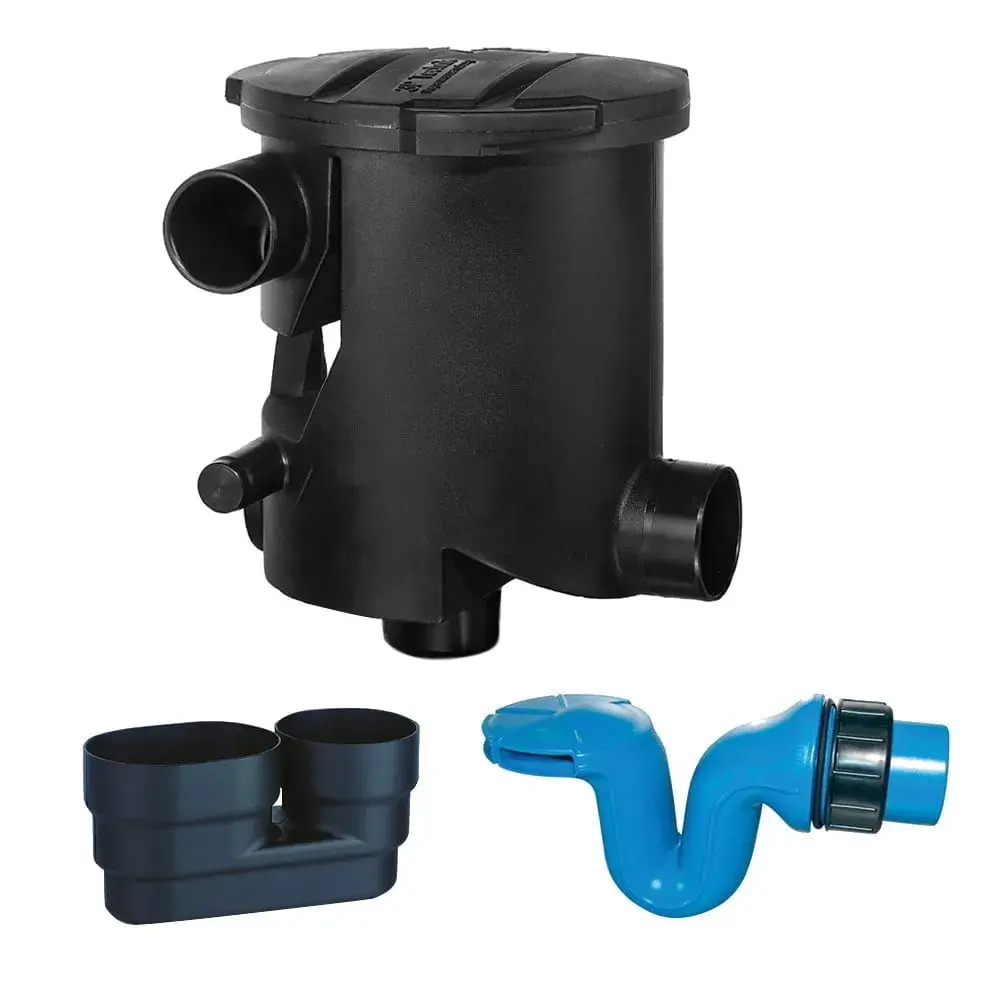
Finding a dead animal in your water tank can be an unsettling experience, but it’s crucial to respond swiftly and effectively to prevent serious health hazards. A contaminated water supply poses risks of bacterial contamination, disease spread, and operational interruptions, all of which need to be addressed promptly to restore safety and functionality. This article provides a step-by-step guide to handling water tank contamination caused by a carcass, along with preventive measures to protect your system and supply in the future.
Understanding The Health Risks of Contamination
When an animal enters and dies in a water tank, the decomposing matter can quickly introduce harmful pathogens into the water supply. These include bacteria such as Salmonella, E. coli, and Leptospira - all of which can cause serious waterborne diseases in both humans and livestock.
In addition to health risks, a decaying carcass can lead to corrosion or biofilm build-up within the tank, potentially damaging your water system and requiring costly repairs. Prompt intervention is essential to contain the problem and avoid wider contamination across connected bowsers or pipework.
What to Do Immediately After Discovering a Dead Animal in a Water Tank
1. Isolate The Tank
As a first step, isolate the contaminated tank from your water network. Shut off any valves or supply lines connected to the tank to prevent spread. Notify anyone who may have accessed the water, such as farmworkers or livestock handlers, and advise against further use until safety is confirmed.
2. Remove The Carcass Safely
Wear appropriate personal protective equipment (PPE), including gloves, eye protection, and a mask. Use long-handled tools to retrieve the animal and avoid direct contact - particularly if the carcass is in an advanced state of decomposition.
Dispose of the remains according to local animal by-product regulations. In the UK, this is governed by the Animal By-Products (Enforcement) (England) Regulations 2013. Where possible, contact your local authority or a licensed waste disposal contractor for safe handling.
3. Disinfect The Tank Thoroughly
After removing the carcass, drain the entire tank and clean all internal surfaces with a high-strength disinfectant approved for potable or livestock water systems. Focus on areas where the carcass may have come into contact with the tank lining. Allow adequate contact time as per the disinfectant’s instructions.
4. Flush The Full System
Once the tank has been disinfected, flush all connected pipework and bowsers to remove any remaining contaminants. If unsure about flushing procedures or volumes, consult a professional with experience in agricultural water systems.
5. Test The Water Before Reuse
Do not return the tank to service until you’ve confirmed the water is safe. Send samples to a UKAS-accredited laboratory to test for microbial presence, including coliform bacteria. Only once results are clear should the tank be refilled and reconnected.
How To Prevent Future Contamination
Unfortunately, it isn’t always possible to completely prevent an animal from falling into an open water bowser or tank, especially on a remote farm. However, several steps can be taken to reduce the risk of further contamination. For example, to prevent wildlife or pests contaminating a water tank, ensure the tank is fitted with a durable, secure cover, perform regular inspections and routine maintenance to identify and fix any vulnerabilities, and position the tank in a controlled or sheltered environment away from wildlife hotspots. For outdoor tanks used to water livestock, adding barriers such as mesh or fencing can provide extra protection, all of which helps to safeguard your water supply against contamination.
Contamination incidents can be stressful for farmers, but having a practical response plan in place can ease the burden. Educate customers and users on how to recognise signs of contamination and implement safety protocols to minimise impact.
For resellers: Emphasising the value of secure tank designs, effective covers, and regular maintenance solutions can make your offerings more attractive to customers.
Take Action Today
Ensuring a clean and safe water supply is vital for maintaining health standards and customer satisfaction in the agricultural sector. With proper preparation, you can protect your system from contamination threats and respond effectively when issues arise.
Get expert guidance on handling and preventing dead animal contamination in your water tank by reaching out to our team today for professional support and peace of mind. Learn more about our resilient, WRAS-compliant drinking water tanks here.

Image source: Canva
Posts By Topics
- Blog (303)
- Chemical Storage Tanks (118)
- Chemical Dosing Tanks (114)
- Chemical Tanks (114)
- Water Tanks (58)
- Rainwater Harvesting Tanks (43)
- Vertical Rainwater Tanks (31)
- Vertical Storage Tanks (31)
- Cone Bottom Tanks (19)
- Conical Cone Tanks (18)
- Rainwater Harvesting (17)
- Water Bowsers (15)
- Horizontal Tanks (14)
- Potable Water Tanks (13)
- Farming (9)
- Case Studies (8)
- Industrial Storage Tanks (7)
- Liquid Fertilser Storage Tanks (6)
- WRAS Approved Potable Tanks (6)
- Wine and Beer Production (6)
- Horizontal Transport Tanks (5)
- Microbrewery (5)
- Rainwater (5)
- Category 5 Break Tanks (4)
- Cider Production (4)
- Mixer Tanks (4)
- Molasses Tanks (4)
- Polyethylene tanks (4)
- Rainwater Filter Kits (4)
- SPECIALIST & BESPOKE TANKS (4)
- Bunded Tanks (3)
- Slimline Tanks (3)
- WRAS Approved (3)
- Clarification Tanks (2)
- Crosslinked Polymer Tanks (XLPE) (2)
- Fertiliser Tanks (2)
- Sump Tanks (2)
- Tank Installation (2)
- Water Butt (2)
- underground water tanks (2)
- ACCESSORIES & FITTINGS (1)
- ATV & UTV SPRAYING UNITS (1)
- Above Ground Effluent Tanks (1)
- Bespoke Tank Frames (1)
- Category 5 Turret (1)
- Caustic Soda Tanks (1)
- Closed Top Bunded Tanks (1)
- Craft beer (1)
- Effluent Tanks (1)
- Enduramaxx (1)
- Ferric Chloride Tanks (1)
- Fire Safety Regulations (1)
- Fire Sprinkler Water Storage Tanks (1)
- Industrial Water Tank (1)
- Open Top Bunded Tanks (1)
- Open Top Cone Tanks (1)
- Open Top Vertical Tanks (1)
- Polyethylene Potable Water Tanks (1)
- Polyvinylidene Fluoride (PVDF) Tanks (1)
- Polyvinylidene Fluoride Tanks (PVDF) (1)
- Pressure Washers (1)
- Pro Series Spot Sprayers (1)
- RWH (1)
- Sodium Hydroxide Storage Tanks (1)
- Sprayer Fill-up Tanks (1)
- Uncategorised (1)
- liquid fertiliser tank (1)
Sign up to the newsletter
enduramaxx.marketing
Related Posts
Can Water Storage Tanks be Buried? Underground Tank Options
Can Water Storage Tanks be Buried? This is a question often asked and the answer is Yes! However, a...
Storage Tanks for Water | Enduramaxx - Manufacturers of Polyethylene Tanks
Enduramaxx manufacture a range of storage tanks for water from 50 litres to 40,000 litres single...
Water Supply From A Well, Borehole Or Rainwater Tank
Water Supply From A Well, Borehole Or Rainwater storage tank – With the advent of water meters and...
Related Products
From £1,080.00 inc. VAT
£900.00 exc. VAT
From £1,344.00 inc. VAT
£1,120.00 exc. VAT
From £768.00 inc. VAT
£640.00 exc. VAT
£480.00 inc. VAT
£400.00 exc. VAT





